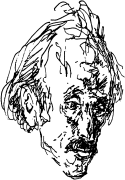‘It was a wonderful partnership of two wonderfully gifted people . . . I know of no-one who remained more “his own man” than Hans, and I salute him for it. Lively, critical, irreverent, enthusiastic, and sceptical, The Jerusalem Diary (1977 and 1979) is as topical today as when it was written.’ Anthony Storr
Hans Keller was born in Vienna in 1919 but moved to England in 1938 in the wake of the Anschluss. He stayed in London until his death in 1985, establishing himself as a commanding and controversial figure in the cultural life of Britain, especially through his 20 years in broadcasting. He was a writer on music, a coach of string quartets, and a celebrated ‘psychological observer’ of the media, institutions and football. His books include 1975 (London, 1977), The Great Haydn Quartets (London, 1986), Criticism (London, 1987) and Essays on Music (1994). He was married to the artist, Milein Cosman, whose portraits of musicians appear in her Musical Sketchbook (London 1957); together they produced Stravinsky at Rehearsal (London, 1962) and Stravinsky Seen and Heard (London, 1982).
The Jerusalem Diary was the remarkable fruit of two visits in 1977 and 1979 to the Mishkenot Sha’ananim, a residence for writers and artists. As a senior figure at the BBC and as a highly articulate, shrewd and witty polymath steeped in music, sociology and psychoanalysis, Hans Keller was better placed than most to record the artistic, social and political life of Israel at a crucial juncture in its history. The Diary, which he described as an ‘anti-journal’, was in the first place a reaction to Saul Bellow’s To Jerusalem and Back. But the result is far more than a topical riposte: at a time of renewed tension in the Middle East, with another dramatic shift in favour of the right-wing Likud party, it is as sharp and relevant now as it was then. The book includes summary of several set-piece lectures on music, three essays on chamber and symphonic works (as Appendices), and 37 drawings of her own chosen by Milein Cosman. It is special as:
- The final – and possibly finest – collaboration between two émigrés, Hans Keller and Milein Cosman, published in celebration of Milein Cosman’s 80th birthday (2001)
- An outstandingly lucid diary presented as an ‘anti-journal’ and an ‘anti-autobiography’
- An extraordinary evocation of Jerusalem in the late 1970’s through text and image
- A remarkable description and diagnosis of the social and political position of Israel quarter of a century ago that has an uncanny relevance to the situation today
- A sustained and deeply insightful commentary on composers, players and music, inside and outside Israel, and a contribution to the history of musical broadcasting.

Milein
Cosman

Fiona Williams
(co-editor)
see also:


